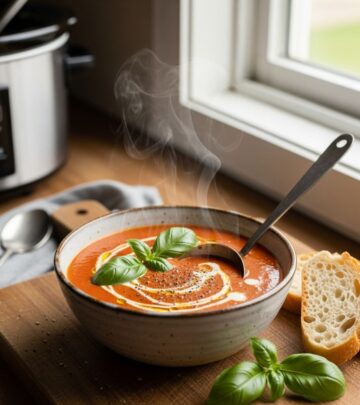White Gingerbread: A Unique Historic Treat Reimagined
Explore the history, distinct preparation, and modern adaptations of white gingerbread, a rare centuries-old delicacy.

White Gingerbread: A Culinary Relic Rediscovered
White gingerbread is an extraordinary confection that offers a glimpse into centuries-old English banqueting traditions. Unlike its more famous sticky, dark cousin, white gingerbread is defined by its pale color, delicate flavor, and the use of almonds, sugar, and sometimes rose water. It bridges the gap between marzipan and the modern gingerbread, enticing bakers and food enthusiasts to venture into the roots of European patisserie.
What Sets White Gingerbread Apart?
- Distinct Color: Achieved by using the finest white sugar and omitting ingredients that darken desserts, such as molasses.
- Almond Base: Traditionally incorporates finely ground blanched almonds, offering a soft, marzipan-like texture.
- Ginger Focus: The recipe uses fresh or ground ginger for flavor without overpowering the delicate sweetness of the sugar and almonds.
- Historic Preparation: Some versions employ gum tragacanth and rose water, echoing Renaissance confectionery techniques.
Historical Origins of White Gingerbread
The notion of white gingerbread first appears in Renaissance England, most notably in the 1591 work A Book of Cookrye by the anonymous ‘A.W.’. By the 16th century, gingerbread was bifurcated into two types:
- Red Gingerbread: Bready, darkened with sandalwood, and often containing breadcrumbs.
- White Gingerbread: A marzipan-like paste using the purest sugar, ground almonds, ginger, and sometimes rose water or gum tragacanth for consistency.
This confection was reserved for banquets and noble feasts, crafted with rare ingredients to impress guests and display affluence.
The Renaissance Recipe—White Gingerbread from 1591
Early recipes detail the steps for creating a sweet paste that is rolled, molded, and decorated. One method, following A Book of Cookrye, reads:
- “Take ginger, pare it and beat it very small and sieve it,” blending it into sugar and ground almonds.
- Use gum tragacanth steeped in rose water for binding.
- Roll into discs, sandwich the ginger-almond paste between two layers, and press into molds.
Such details illustrate not only the culinary skills of the era but also the texture and appearance valued for white gingerbread: soft, pale, and intricately shaped.
Modern Adaptations and Recipe Variants
While the historical recipes are enchanting, modern bakers benefit from straightforward adaptations. Helen Edden’s County Recipes of Old England (1929) presents a version closer to shortbread, combining traditional elements with contemporary baking practices.
White Gingerbread Ingredients
| Traditional (1591) | Modern (1929) |
|---|---|
|
|
Step-by-Step Preparation Guide
Traditional White Gingerbread
- Place gum tragacanth in a bowl. Add half the rose water and leave to soak for 12–24 hours.
- Sift icing sugar into a bowl, add the water and softened tragacanth. Knead to form a smooth, solid ball.
- Grind blanched almonds to a fine powder.
- Peel and crush ginger into a pulp; combine with remaining rose water.
- Mix ginger and almonds with a spoonful of icing sugar, forming a stiff paste.
- Divide the sugar paste; roll into two discs.
- Spread almond-ginger paste on one disc. Cover with the other disc and seal.
- Press into a mold. Let set in a dry place for 24 hours until hard.
- Decorate with edible gold, designs, or serve plain.
Modern Recipe: White Gingerbread Shortbread
- Preheat oven to 350°F (175°C).
- Cream together 4 oz unsalted butter and 1 1/3 cups sugar.
- Beat in 2 egg yolks.
- Mix 4 cups flour, 1 tbsp baking powder, and 4 tbsp ground ginger separately.
- Gradually add flour mixture to creamed mixture.
- Whip 2 egg whites until foamy and gently fold into dough.
- Shape dough into a ball, flatten slightly on greased foil-lined baking sheet.
- Cut a cross on top for even baking.
- Bake until toothpick emerges almost clean (approx. 45 minutes). Do not let brown—reduce heat if necessary.
- Cool on a rack. Serve warm or at room temperature.
Taste, Texture, and Serving Suggestions
- Flavor Profile: Gentle sweetness, warmth from ginger, subtle almond notes. Not as bold or sticky as traditional dark gingerbread.
- Texture: Smooth and marzipan-like when prepared traditionally; crumbly and almost like shortbread in modern versions.
- Serving: Perfect alongside robust bitter drinks (like strong ale or white rum), with gentle seasoning or gilded decoration.
Tips for Perfect White Gingerbread
- Use the highest-quality, finely ground sugar for a pale color.
- Do not overbake; white gingerbread should be tender and light, not browned.
- If using molds, ensure the paste is set before removing.
- A touch of rose water adds authentic floral notes—substitute orange blossom if unavailable.
- Incorporate gum tragacanth for the original chewy texture, or omit for ease.
Decorating and Presenting White Gingerbread
Historically, white gingerbread was as much a visual centerpiece as a sweet treat. Once unmolded, it could be:
- Embellished with edible gold leaf or colored powders.
- Stenciled or pressed with ornate patterns using specialized molds.
- Served in geometric shapes or cut squares for a modern presentation.
Comparing White and Dark Gingerbread
| White Gingerbread | Dark Gingerbread |
|---|---|
| Pale, almost white; almond and sugar base; mild ginger flavor; pressed into molds; served at banquets | Brown or dark; contains molasses or treacle; spicy ginger and often sticky; baked in pans |
Frequently Asked Questions (FAQs)
Q: Is white gingerbread the same as traditional gingerbread?
A: No, white gingerbread is distinct. It uses white sugar and almonds to achieve its pale look and soft texture, contrasting with dark gingerbread’s sticky, molasses-rich crumb.
Q: What is gum tragacanth, and do I need it?
A: Gum tragacanth is a plant-derived thickener historically used to create chewy sugar pastes. For authenticity, use it soaked in rose water. If unavailable, omit or substitute with a little extra icing sugar—results may differ.
Q: Can I substitute ground ginger for fresh?
A: Yes, ground ginger is a convenient alternative and more common in modern baked gingerbread, though fresh ginger offers subtle heat and flavor.
Q: How do I serve white gingerbread?
A: Traditionally, serve as molded or cut pieces, optionally decorated, alongside bitter drinks such as strong ale or white rum.
Q: How should I store white gingerbread?
A: Store in a cool, dry place to prevent softening or spoilage. It will firm up over 24 hours and can last several days if kept airtight.
Conclusion
White gingerbread is a rare and fascinating treat, offering a taste of Renaissance England in your own kitchen. Its combination of subtle spices, sweet almonds, and gentle florals creates a confection that stands out from classic dark gingerbread. Whether following an ancient method or a modern adaptation, white gingerbread provides a unique experience for bakers and culinary historians alike.
Read full bio of medha deb












